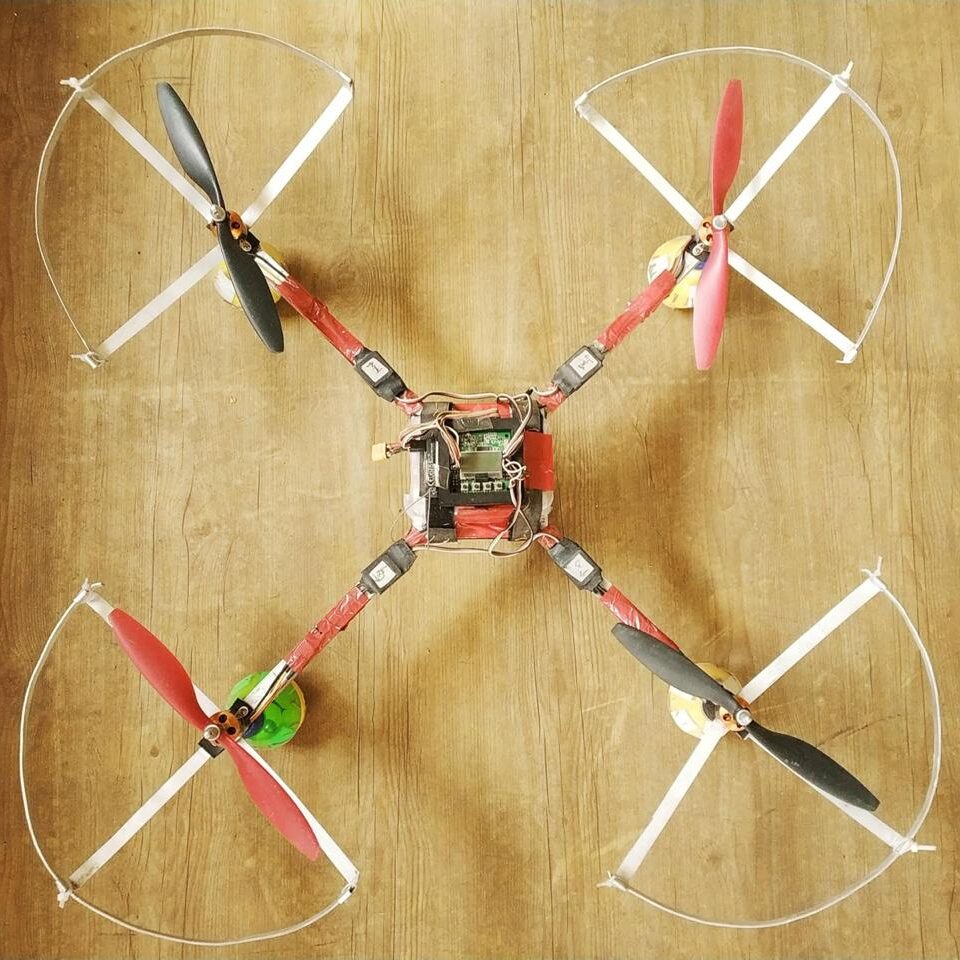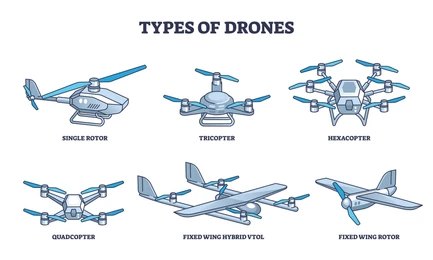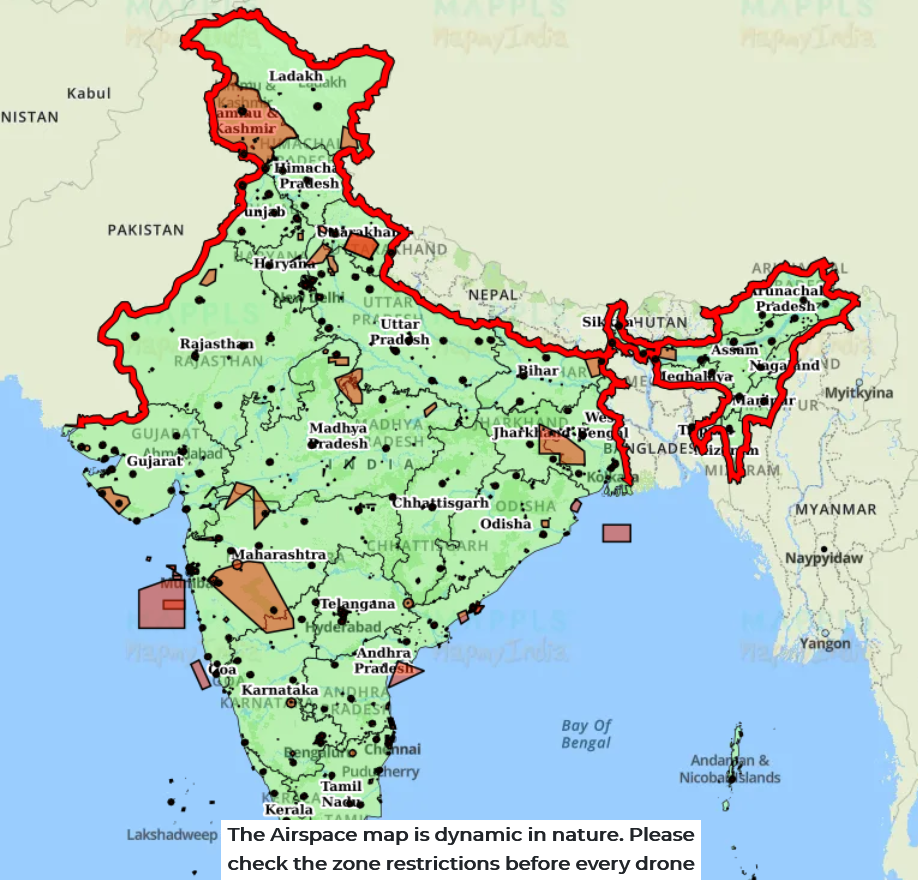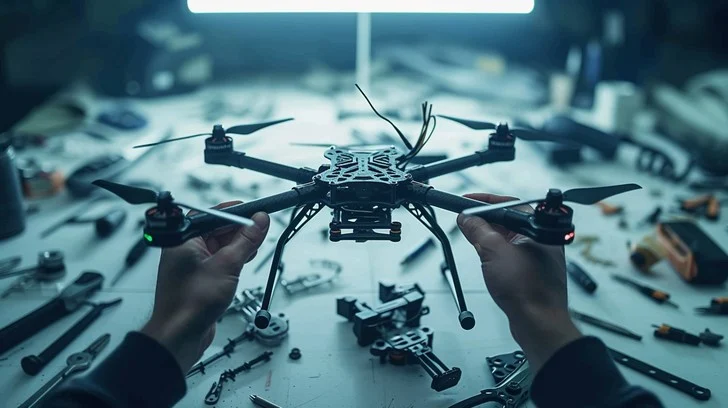The drone industry has evolved from recreational mechanical gadgets to highly specialized aerial systems used in industries ranging from logistics and defense to agriculture and inspection. Whether you’re an engineering student, tech enthusiast, or someone curious about flying machines, understanding UAVs (Unmanned Aerial Vehicles) from the ground up is essential before buying or operating one.
This guide offers a foundational overview of what drones are, how they work, and how you can begin your journey with a strong, informed start.
Understanding What a Drone Is and How It Works
A drone is essentially an aircraft without a pilot onboard, controlled remotely or autonomously via onboard computers. For beginners, the most commonly encountered category is the multirotor drone typically with four rotors (a quadcopter). These drones can hover, maneuver in tight spaces, and are mechanically simpler than fixed-wing aircraft, making them ideal for learning.
Every drone consists of a few core systems:
- Airframe: The structural body made from plastic, carbon fiber, metals or composites.
- Motors and Propellers: These generate lift and directional control.
- Electronic Speed Controllers (ESCs): Manage motor thrust dynamically.
- Flight Controller (FC): The central processor that balances the drone and interprets control inputs.
- Battery (typically LiPo): Powers the entire system.
- Optional Systems: GPS module, camera gimbal, telemetry radios, and sensors like barometers or magnetometers etc.
The stability in flight is achieved using gyroscopes and accelerometers. These feed data to the flight controller, which adjusts motor speeds in real time to keep the drone level and responsive.

Choosing the Right Drone as a Beginner
When selecting a drone, the first consideration should be purpose, are you learning to fly, capturing video, or exploring specific use cases? From there, size, budget, and reliability come into play.
Entry-level drones (approximately under ₹10,000) often do not include GPS or image stabilization but are great for building basic skills indoors or in low-wind environments. These are typically referred to as toy drones.
Beginner-level GPS drones in the ₹15,000–₹35,000 range offer features like return-to-home, position hold, and HD cameras. These strike the best balance of control and learning curve.
Avoid advanced models with manual flight modes or FPV racing setups until basic muscle memory is established. Also, avoid drones without sufficient documentation or community support, especially in regions where after-sales service is weak.
Common Drone Categories
To make sense of the market, here are the broad categories you’ll encounter:
- Single Rotor – Helicopter-style drone with extended flight time, used for heavy payloads or endurance missions.
- Tricopter – Three-rotor design offering unique yaw control, mostly seen in early DIY or experimental builds.
- Hexacopter – Six-rotor drone known for stability and redundancy, ideal for professional aerial imaging and payloads.
- Quadcopter – Most common four-rotor drone, widely used for training, photography, and general-purpose flying.
- Fixed-Wing Hybrid VTOL – Combines vertical takeoff with efficient fixed-wing cruise, suited for long-range mapping and logistics.
- Fixed-Wing Rotor – Airplane-like UAV optimized for long-endurance and wide-area coverage, used in surveying and agriculture.

Legal Considerations: Regulations for Drone Operators
As of Today, the Directorate General of Civil Aviation (DGCA) governs civil drone operations in India through the Drone Rules, 2021. Here’s what beginners must understand:
- Nano drones (<250g) do not require registration.
- Micro to Medium drones must be registered with DGCA and issued a Unique Identification Number (UIN). and further categories are yet to explore from a regulations perspective.
- For commercial usage — you must obtain a Remote Pilot Certificate from a DGCA-approved Remote Pilot Training Organization (RPTO).
All flights must comply with airspace restrictions:
- Green Zones: Free to fly under 120 meters or 400 fts AGL without prior approval.
- Yellow Zones: Controlled airspace requires permission via the Digital Sky platform.
- Red Zones: Strictly no-fly. Includes defense establishments, airports, border areas, and key government zones.
Always verify your location using the Airspace Map on the DGCA Digital Sky website or app. Flying in red or restricted zones can result in legal prosecution and drone confiscation.

Basic Flight Training Concepts
The learning phase is the most critical what you build here will reflect in your confidence, control, and risk mitigation in future operations.
- Start in open, unobstructed areas. Avoid trees, power lines, or urban rooftops.
- Practice orientation. Many beginners crash simply because they lose track of which direction the drone is facing.
- Use a checklist. Each flight should follow a basic protocol:
- Battery charge > 95%
- Propeller integrity check
- Compass and IMU calibration
- GPS lock verification
- Signal link strength between drone and transmitter
- Battery charge > 95%
Post-flight checks should include prop inspection, battery temperature, and motor wear if flown intensively.
If you intend to pursue licensed operations in agriculture, surveillance, or enterprise applications, enroll in a DGCA-authorized RPTO course as discussed earlier. These cover theory (aerodynamics, airspace management, weather), simulator training, and live flying hours followed by evaluation and certification. The license remains valid for 10 years and is essential for flying drones >2kg or in commercial setups.
Common Beginner Mistakes and How to Avoid Crashes
From firsthand testing and thousands of logged flight hours, these are the top issues seen with new pilots:
- Flying too fast too soon: Keep throttle inputs smooth. Avoid full stick deflections unless needed.
- No wind awareness: Even a light crosswind can destabilize a small drone mid-hover.
- Disabling GPS indoors: Without optical flow sensors, indoor flight in GPS mode leads to drift.
- Skipping compass calibration: Especially after traveling long distances this leads to flyaways.
- Misjudging battery life: Flying a drone back on low battery can result in emergency landings far from you.
- Flying near metallic objects or RF sources: Towers and transformers interfere with signal integrity.
- Disorientation during nose-in flight: Controls become reversed, confusing pilots.
Crash Avoidance Tips:
- Practice with prop guards during training.
- Always keep line of sight, especially without FPV.
- Update firmware only when the battery is above 50% and motors are off.
- Use failsafe features like Return-to-Home, and test them in a controlled environment.
Each crash teaches something but most can be avoided through discipline and incremental learning.
Final Thoughts
Drones aren’t simply remote-controlled toys or cameras in the sky. They are aerial systems that merge real-time control theory, embedded electronics, and computational stability logic. As someone trained in aeronautical engineering and involved in the development of fixed-wing VTOLs and drone logistics platforms, I can affirm these are flying machines that deserve the same engineering caution and flight discipline we apply to aircraft.
Every decision from takeoff to landing relies on a combination of good systems, good training, and sound judgment. This guide offers only the starting point. Mastery comes from flying safely, learning continuously, and respecting the airspace as a shared domain.
If you are serious about drones not just as a hobby, but as a discipline, take your time to understand the aircraft, follow the law, and fly with purpose.
Happy Flying!!!

